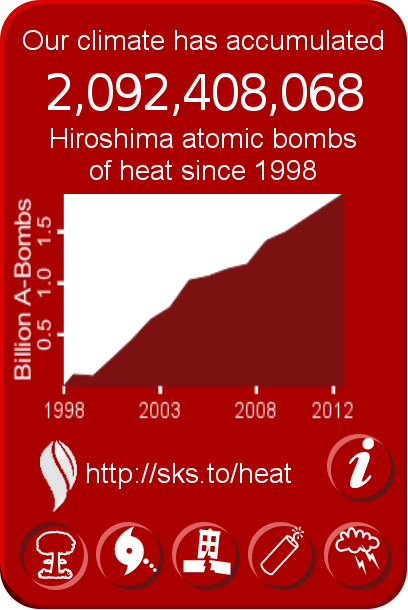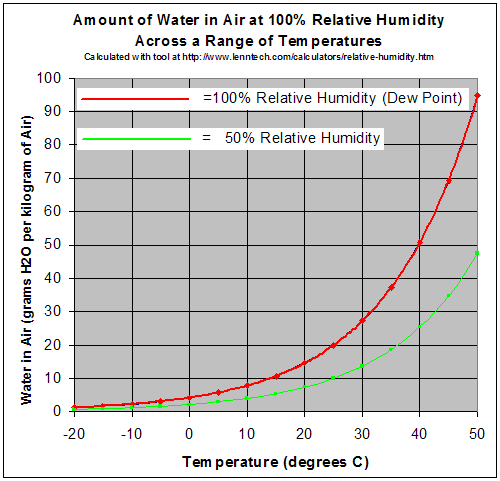More maps here:dohboi wrote:(Note that this is quite old--1997. I suspect now much larger areas of, for example, northern China would be considered under threat.)
https://www.google.ca/search?q=desertif ... isch&tbo=u
More maps here:dohboi wrote:(Note that this is quite old--1997. I suspect now much larger areas of, for example, northern China would be considered under threat.)




In southern New Mexico, the transformation has gone one step further — from sagebrush to weeds to sand-blown desert — and biologists say the pattern is likely to be repeated across the West.






I posted this in the Drought Thread. It suggests that a cooler earth was a wetter earth, at least in western North America.KingM wrote:A warmer earth will be a wetter earth. That doesn't mean the climate zones won't shift, but there will be less desert in the future, not more.

During the Last Glacial Maximum (LGM), giant lakes covered large sections of California, Nevada, Oregon and Utah, including where Salt Lake City is today. Earth scientists have long been puzzled by how these ancient lakes, now completely dry, grew so large. The prevailing theory was there was more rain and snowfall during this time period. But recent evidence from paleoecology and climate model simulations indicates that precipitation rates were actually relatively low compared to later periods.
...
Their analyses revealed that 21,000 years ago, the evaporation rate at Lake Surprise was nearly 40 percent lower than today, with precipitation rates similar to the modern era. These results are consistent with previously run climate simulations that show Earth's climate was cooler during the LGM.
The cooler global temperatures would have reduced evaporation rates, allowing the lakes to gradually grow over time through inflows from streams and rivers.
"Lake Surprise is located in a closed basin. All streams flow into the lake, but there is no outflow. The only way for water to escape is through evaporation," Ibarra said.
http://phys.org/news/2014-06-scientists ... lakes.html


Arizona is bone dry, desiccated by the worst drought ever seen in the state’s 110-year long observational record. The Grand Canyon State has been in drought conditions for a decade, and researchers think the dry spell could hold out for another 20 to 30 years, says the City of Phoenix.
That people have not been fleeing Arizona in droves, as they did from the plains during the 1930s Dust Bowl, is a miracle of hydrological engineering. But the magic won’t last, and if things don’t start to change Arizona is going to be in trouble fast, says the New York Times.
A quarter of Arizona’s water comes from the Colorado River, and that river is running low. There’s not enough water in the basin to keep Arizona’s crucial Lake Mead reservoirs topped up. If changes aren’t made to the entire multi-state hydrological system, says the Times, things could get bad.




dohboi wrote:KM, you are right that the average global atmospheric humidity has been and will continue to rise. But the same heat that allows that to happen also dries out soils, especially those that are already partly dry. The general pattern is that relatively already dry areas will get drier while wet areas will tend to get wetter. But as you say zones will also shift, sometimes in unpredictable ways. The 'stuck' jet stream waves are also likely to cause certain areas to get very dry and others very wet. Neither are good for agriculture--more crops are lost to floods than to drought, iirc.






dohboi wrote:Sub, to paraphrase/summarize Syn's excellent points--the earth is not a uniform sphere. Increase in average humidity does not imply increase in humidity everywhere. Places where conditions already 'discourage' precipitation will mostly get yet drier and hotter.
Also, as the tropical Hadley Cell continues to expand, places that used to get regular rainfall will rather suddenly stop getting it (or not get it with the same regularity).



Warming temperatures, scientists say, can tip places into drought conditions by increasing evaporation and sapping soil of its moisture. A new study suggests up to a third of the Earth's land area could be subject to drier conditions because of warmer temperatures, not just changing precipitation patterns, by the end of the century.
The study finds that one of the agricultural heartlands of the United States, the Central Plains, could become drier, even though it may not receive less rain in the future, simply because warmer temperatures will drive evaporation to dry out the rich soils. Drier soil makes it harder to grow the food that feeds the country, which can have knock-on effects on trade and national security.
And the problem isn’t limited to the U.S.: Western Europe and the fertile fields of southeast China show the same drying trend, the study, detailed in the journal Climate Dynamics, found.






I think that map shows absolute (not relative to now) drought.dohboi wrote:I note also that this map, at least, shows the Sahara mostly staying the same or getting drier.




Return to Environment, Weather & Climate
Users browsing this forum: No registered users and 42 guests